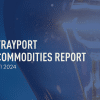Algorithmic trading was originally introduced for power markets to deal with the complexity of the intraday market – specifically to handle the increase in both volatility and number of intraday products traded. This article takes a closer look at how renewable energies drive more volatility in intraday prices, how this has led to a total revolution in intraday trading in the form of algorithmic trading, and is expected to do so for years to come.
Market Fundamentals
Algorithmic trading within the European energy markets is a relatively new development. Fundamental changes in the electricity markets due to the rise of wind and solar power generation over the last few years has accelerated these developments.
By way of background, electricity generation has to match consumption at all times since there is no means of storing electricity on a large scale at the moment. A Transmission System Operator (TSO) ensures that the power grid remains stable at 50Hz in order to avoid blackouts and all its associated economic and social implications. The TSO will therefore utilise ancillary services from power plants to balance generation and consumption, thereby ensuring stability in the system.
The Rise Of Renewables & Need For Intraday Markets
The rise of renewable energies started to play havoc with the traditional system however. Unlike conventional power plants, renewable energies such as wind and solar are completely dependent on weather conditions and are quite difficult to forecast. Life for a TSO has subsequently become much more difficult and for energy companies the day-ahead markets were not sufficient enough to balance their portfolio.
That’s why intraday markets were introduced. Intraday products can be traded up to five minutes before the delivery, and in small time slots (either 15, 30 or 60 minutes). Due to the large number of tradable intraday products traders were finding it increasingly difficult to be able to manage these on a manual basis. Therefore the rise of algorithmic trading was a direct consequence of the intraday power market, and we’re now seeing algorithmic trading also being used in natural gas spot markets.
The Business Case For Algorithms
Step forward the use of algorithms for energy markets to help traders manage these complex scenarios. There are two algorithms currently popular within the energy market trading community, including:
-
- ‘Position Closing’ Algorithm: Algorithms can be used to automatically balance a portfolio. For example, in the case where providers find themselves in a position of having to go to the market to close a position as they have no flexibility to adjust their own power plant due to ever-changing levels of renewable energy generation. Additionally, this algo can be used to close forecast errors for consumption, as well as production;
-
- ‘Flexibility Marketing’ Algorithm: This algorithm calculates the optimisation of how much a power plant can make on the intraday market, versus the marginal costs incurred by the plant. In other words, a plant can sell the flexibility it might have and in doing so make additional profits. On the other hand, a plant can buy back assets if the intraday market comes in below marginal costs. This provides a risk-free solution as it is always calculated back-to-back against the assets.
Both of these algorithms are offered as standard in Trayport’s algo solution, autoTRADER. The algorithmic trading module is fully integrated into one trading platform that can incorporate intraday manual trading for those that need that capability. Trayport’s autoTRADER Flexibility Marketing Algorithm provides up to 25 pricing tiers and considers the asymmetric ramps of power plants, which is important in intraday trading as it opens up more opportunities to generate profit.
Looking Ahead
Algorithmic trading is also currently expanding to the long-term product – to futures and forwards. Hedging is used to protect future positions, including power plant generation, fuel costs, CO2 exposure, and customer consumption.
For example, when we look at the consumption hedging policy of a utility, there could be a need to hedge the consumption profile 3-4 years into the future by using long-term products. An algorithm can not only monitor real-time the large number of products required to achieve this, but can also monitor the liquidity and difference in spreads. A fast reaction to market changes is crucial… and it is practically impossible for manual traders to achieve this speed of execution.
Technical analysis software, such as that provided by our partnership with Tradesignal, means traders can define a trading strategy so that a trigger for buying and selling is automatically created, which is then executed by Trayport’s autoTRADER. To avoid instances of cross trading and help manage manual smart order trades alongside algorithmic trading, the autoTRADER Internal Market constantly checks if trades can be netted without slowing down external trading actions. A development environment is also provided with a bespoke coding library so that code for additional algorithms can be quickly written and tested against both historical and live data provided by Trayport’s Data Analytics product.
The Future Of Algorithms
The rise of wind and solar renewable energy made it necessary to introduce the intraday market, whereupon hundreds of products suddenly became tradable with extremely volatile prices. Traders, therefore, adopted algorithms to help them manage this challenge – the two most popular of which are the ‘Position Closing’ and ‘Flexibility Marketing’ algorithms. In addition, there have now been use cases developed for long-term products for hedging and speculative strategies.
What has become clear is that while algo trading in energy markets has rapidly developed over a short period of time, algorithms are not replacing traders. Just as is standard in the finance markets, whereby quants perform trading analysis and hand trading strategies to traders to execute, it will not at all be unusual to have quants and analysts write complex trading algorithms for the energy forwards and futures market. And with solutions like Trayport’s autoTRADER covering everything that you need, you may actually find algorithmic trading fun.




